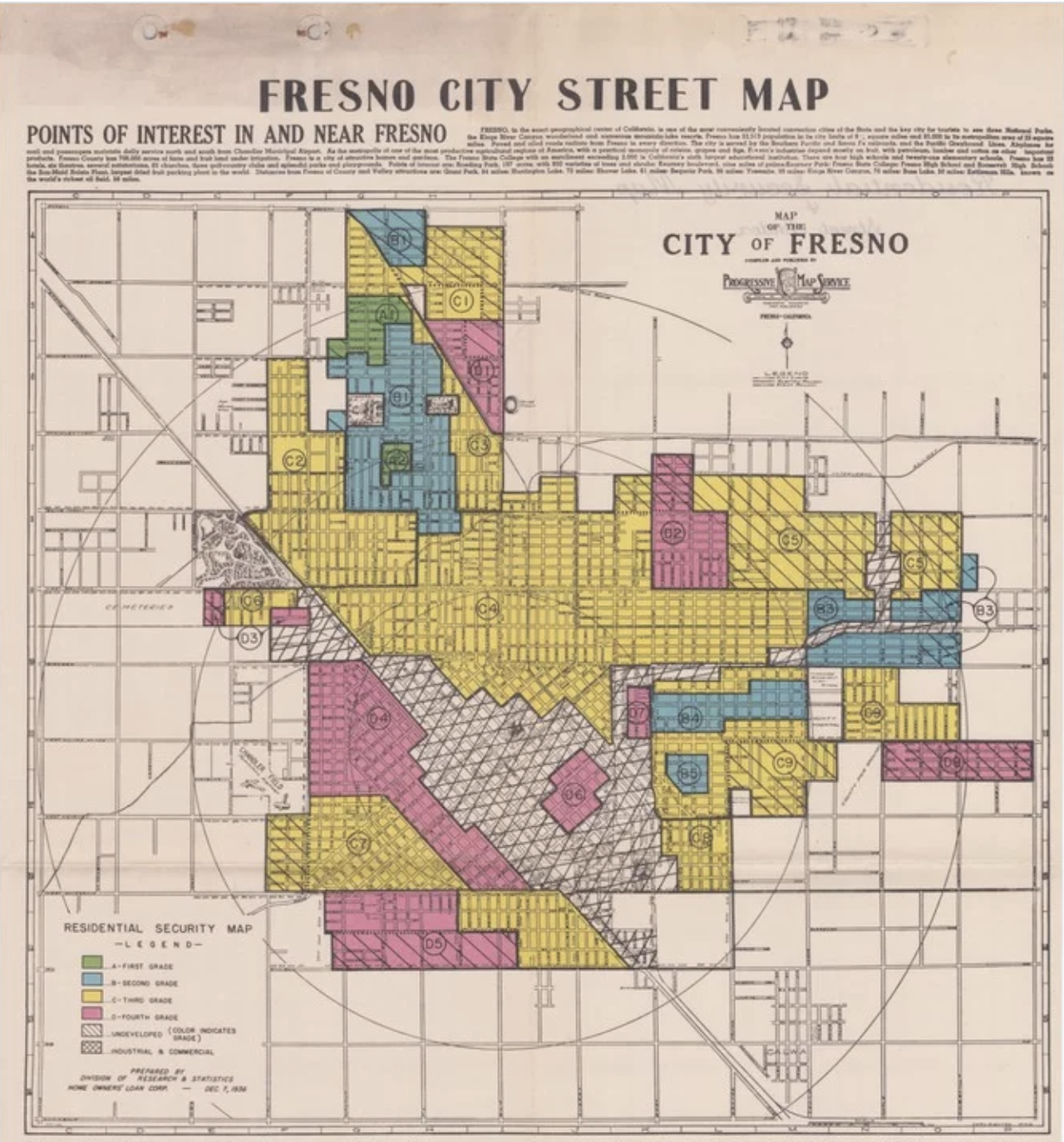racial equity
We commit to dismantling systemic racism, redressing past discrimination, and advancing equity within our organizations, in our communities and in our nation through our organizational policies and practices, in our programmatic work and by advocating for changes in public policy and law. Racial and ethnic disparities are a direct result of systemic racism today as well as past, unremedied discrimination that was often imposed or sanctioned by the government. Addressing these disparities requires our active engagement to change law, policy and practice.

The Home Owners’ Loan Corporation used this redlining map to preserve segregation in Fresno.

1985 to 2020

FACT:
Many Americans get help buying their first home. Nearly one-third of first-time homebuyers get gifts from family or friends to help with their down payment, and white homebuyers are twice as likely as Black homebuyers to get family help for a down payment (source: Shapiro, Thomas M. Toxic Inequality, 2017). Habitat’s down payment assistance program helps homebuyers secure their down payment in exchange for volunteer time in building their own homes.
our roots
Habitat for Humanity is more than a nonprofit housing ministry—we have a vision of a world where we share one humanity. This is a world we believe in and fight for each day. We are a faith-based organization, but we realize faith alone is not enough. Our faith must be coupled with work and action!
The early seeds of Habitat were planted in the small farming community of Koinonia Farm in Georgia by Clarence Jordan. Amidst racial inequity and unrest, Clarence was considered a radical Christian. Why? Because he chose to pay Blacks and whites equal wages to farm, grow the community, and build homes together. Despite persecution, these early seeds helped grow Habitat for Humanity’s voice and impact as one of the world’s largest builders of affordable homes. This was an early example of equity in housing.
our realities
In a 2018 article published by the Atlantic, the original map depicts Fresno’s history of redlining. “White neighborhoods were shaded green, and white buyers in these areas were generally approved for loans. Neighborhoods with large minority populations were shaded red, denied mortgages, and labeled undesirable. Fresno’s west side was red.”
In his report, James Helming noted the “almost exclusive concentration of colored races” in less desirable locations. In affluent neighborhoods, like Fig Garden, “residence lots were sold under careful deed restrictions as to race.”
As an outcome of these and other realities, according to the Urban Institute, Fresno ranked 59th among California’s largest 59 cities in economic and racial inclusion. Recent studies have shown a 20-year delta in life expectancy from those born into southwest Fresno compared to those born into northern parts of the city. A lack of safe and decent housing is one of the underlying reasons for this sad but true reality.
our response
As an equal opportunity housing partner, Habitat Greater Fresno Area has a history of assisting those who are not often regularly touched by the market.
Furthermore, we are committed to continuing to support marginalized people and undo systemic housing equity issues through our “hand up” model.
A few of our priorities include:
- Continue to educate ourselves on housing and race
- Remain committed to retaining and pursuing a diverse staff/board
- Grow our renter and homeowner education housing programs
- Further our advocacy at the local, state, and national levels
- Continue our down payment assistance program while marketing to all communities irrespective of any social identifier
